When you load the roof, the centre of gravity of the vehicle rises and the usual driving characteristics as well as the steering and braking characteristics change. During cornering, the vehicle tilts more strongly and may react more sluggishly to steering movements.
If you exceed the maximum roof load, the driving characteristics, as well as the steering and braking characteristics, will be greatly impaired.
The vehicle could be damaged by roof racks which have not been tested and approved by Mercedes-Benz.
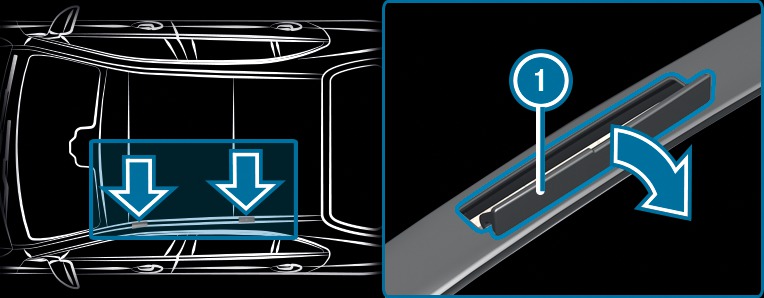
The covers may be damaged and scratched when being opened.
 upwards in the direction of the arrow.
upwards in the direction of the arrow.  .
. If the rear bench seat/rear seat and seat backrest are not engaged they could fold forwards, e.g. when braking suddenly or in the event of an accident.
If this is the case, the vehicle occupant would be forced into the seat belt by the rear bench seat/rear seat or by the seat backrest. The seat belt cannot protect as intended and could result in additional injury.
Objects or loads in the boot/load compartment cannot be restrained by the seat backrest.
If the left and right seat backrests are not engaged and locked in place, this will be shown on the multifunction display of the instrument cluster. A warning tone will also sound.
If the centre seat backrest is not engaged and locked, the red lock verification indicator will be visible.
The centre and outer seat backrests can be folded forwards separately.
The outer seat backrests are unlocked electrically. The release buttons are located inside the load compartment.

 into the seat belt extender
into the seat belt extender  .
. 
 .
. The corresponding seat backrest will fold forwards.
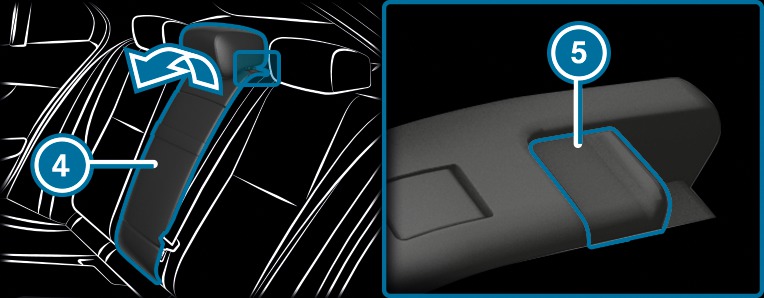
 of the seat backrest
of the seat backrest  forwards.
forwards.  forwards.
forwards. If the rear bench seat/rear seat and seat backrest are not engaged they could fold forwards, e.g. when braking suddenly or in the event of an accident.
If this is the case, the vehicle occupant would be forced into the seat belt by the rear bench seat/rear seat or by the seat backrest. The seat belt cannot protect as intended and could result in additional injury.
Objects or loads in the boot/load compartment cannot be restrained by the seat backrest.
The seat belt could become trapped and thus be damaged when the seat backrest is folded back.

 back until it engages.
back until it engages. Left and right seat backrests: if the seat backrest is not engaged and locked, this will be shown on the multifunction display on the instrument cluster.
A warning tone will also sound.
Centre seat backrest: if the seat backrest is not engaged and locked, the red lock verification indicator  will be visible.
will be visible.
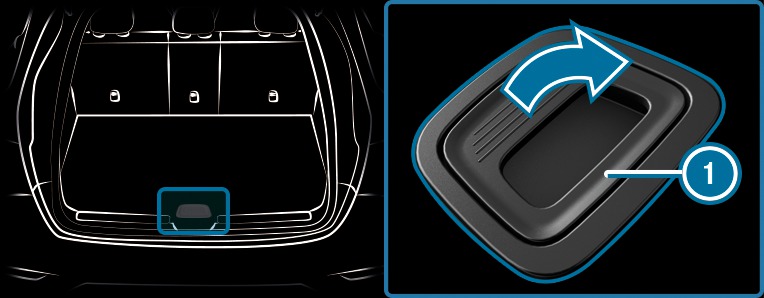
 and fold it over at the hinge in the centre of the load compartment floor.
and fold it over at the hinge in the centre of the load compartment floor. 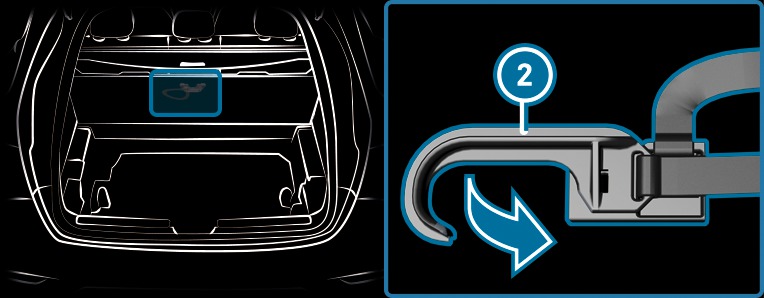
 on the underside of the load compartment floor.
on the underside of the load compartment floor. 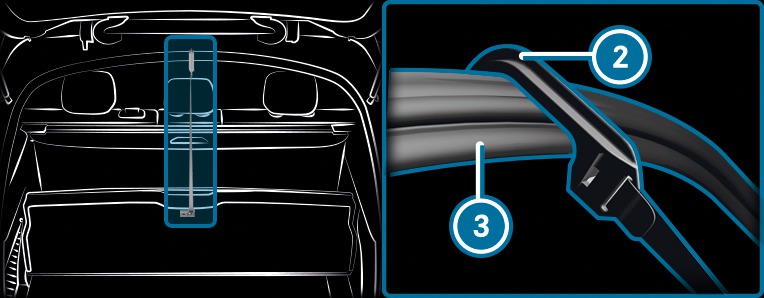
 to top seal
to top seal  of the load compartment.
of the load compartment.  from top seal
from top seal  of the load compartment.
of the load compartment.  to the bracket on the underside of the load compartment floor.
to the bracket on the underside of the load compartment floor. If the ball neck is not engaged, the trailer may come loose.
The all-electric trailer hitch could be mechanically damaged by applying additional pressure when the ball neck is being extended or retracted.
The vehicle is secured against rolling away.
The range of movement is clear.
The trailer cables or adapter plugs have been removed.
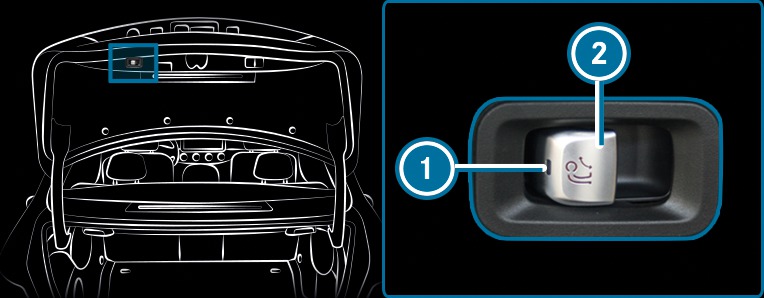

 .
. Indicator lamp  will flash and the Trailer coupling extending… display message will appear on the multifunction display.
will flash and the Trailer coupling extending… display message will appear on the multifunction display.
The ball neck will extend fully electrically.
The ball neck is securely locked in place when indicator lamp  is continuously lit.
is continuously lit.
If the ball neck is not securely locked in place, indicator lamp  will flash and the Check trailer hitch lock display message will appear on the multifunction display.
will flash and the Check trailer hitch lock display message will appear on the multifunction display.

 .
. Indicator lamp  flashes and the message Trailer coupling extending… appears on the multifunction display.
flashes and the message Trailer coupling extending… appears on the multifunction display.
The ball neck will retract fully electrically.
The ball neck is securely locked in place once indicator lamp  goes out.
goes out.
If the ball neck is not securely locked in place, the indicator lamp  flashes and the message Check trailer hitch lock appears on the multifunction display.
flashes and the message Check trailer hitch lock appears on the multifunction display.
Indicator and warning lamps More
Display messages
Observe the notes on loading the vehicle More.
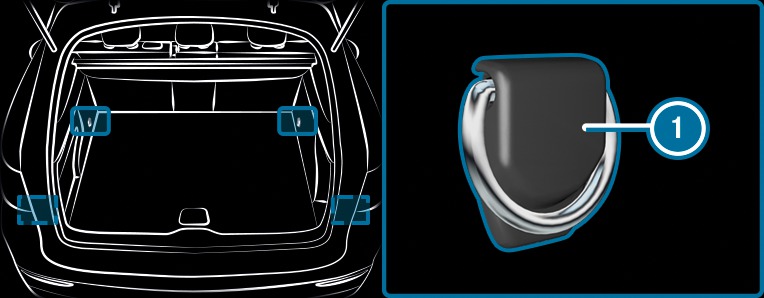

If objects in the vehicle interior are stowed incorrectly, they can slide or be thrown around and hit vehicle occupants. In addition, cup holders, open stowage spaces and mobile phone receptacles cannot always retain all objects they contain.
There is a risk of injury, particularly in the event of sudden braking or a sudden change in direction.
Observe the notes on loading the vehicle.





If you inadequately stow objects in the vehicle interior, they could slip or be tossed around and thereby strike vehicle occupants. In addition, cup holders, open stowage spaces and mobile phone brackets cannot always restrain the objects they contain in the event of an accident.
There is a risk of injury, particularly in the event of sudden braking or a sudden change in direction.
Observe the notes on loading the vehicle.
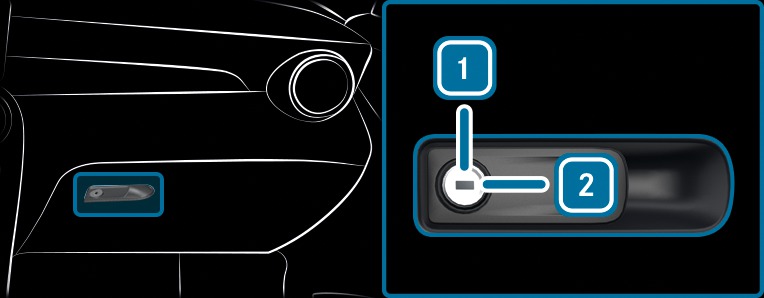
 (to lock) or anti-clockwise
(to lock) or anti-clockwise  (to unlock).
(to unlock). If objects in the vehicle interior are stowed incorrectly, they can slide or be thrown around and hit vehicle occupants. In addition, cup holders, open stowage spaces and mobile phone receptacles cannot always retain all objects they contain.
There is a risk of injury, particularly in the event of sudden braking or a sudden change in direction.
Observe the notes on loading the vehicle.

 and swing the cover of the armrest upwards.
and swing the cover of the armrest upwards. 
